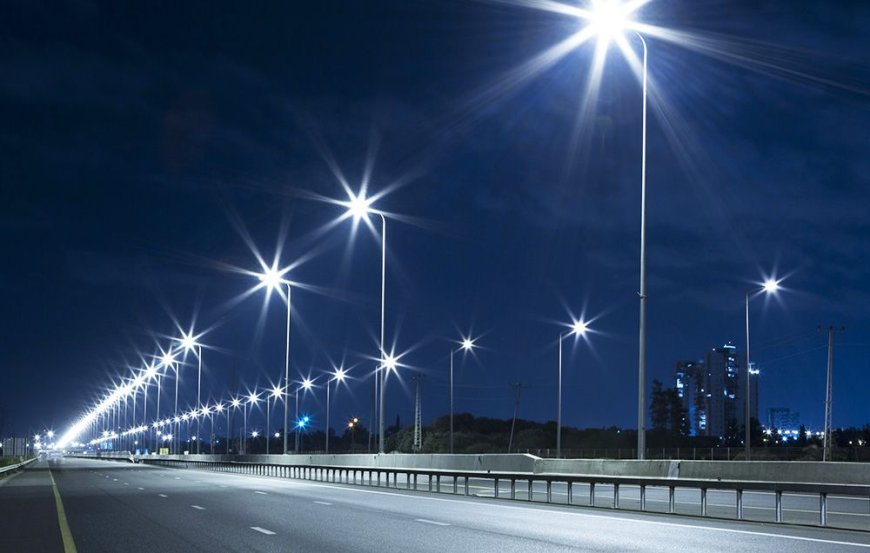Lahore to Install 88,000 Imported Street Lights in Massive Urban Revamp
Lahore to install 88,000 new street lights imported from Dubai under LDP, aiming to boost safety, visibility, and modernize the city by November 2025.

Lahore, often called the “City of Gardens,” is on the brink of a major transformation as the government launches an ambitious project to brighten the city with 88,000 new street lights imported from Dubai. The initiative, led under the Lahore Development Program (LDP), reflects a broader push to modernize the city’s infrastructure, improve public safety, and give Lahore a contemporary urban look that matches global standards.
First Shipment From Dubai
Officials revealed that the first batch of 22,000 street lights, manufactured by Philips in Dubai, has already arrived in Lahore. These lights are now being installed in the Samanabad Zone, which was chosen as the starting point for the project.
The choice of Dubai-made lighting equipment underscores the city government’s focus on quality and durability, opting for internationally recognized suppliers instead of locally produced fixtures. This also signals that the project is being treated as a high-priority initiative with no compromises on standards.
Phased Rollout Across the City
The project is structured in phases to ensure smooth implementation. After Samanabad, the installation will expand to other key zones including Ravi, Data Ganj Bakhsh, Gulberg, Nishtar, and Shalimar. Later phases will bring new lighting to Aziz Bhatti Town, Wahga, and Allama Iqbal Town.
By November 2025, the Lahore Development Authority expects the full 88,000 lights to be operational, covering nearly every major road and residential neighborhood across the city.
Why It Matters for Citizens
For years, Lahore’s residents have complained about poorly lit streets, especially in densely populated areas and older neighborhoods. Dimly lit roads have been linked to:
-
Higher rates of traffic accidents, particularly involving motorbikes and pedestrians.
-
Increased risks of theft and street crime, making many areas unsafe after dark.
-
Restricted night-time economic activity, as shopkeepers and vendors often close early due to safety concerns.
City officials believe that modernizing the street lighting system will create a safer, more vibrant urban environment, encouraging business, tourism, and community activity well into the night.
The Technology Factor
While the government has not disclosed full specifications, urban planners suggest that the imported lights are likely LED-based, given global trends toward energy-efficient technology. LED systems consume significantly less power than conventional bulbs, lowering long-term electricity costs for the city.
Additionally, LED fixtures have longer lifespans, reducing maintenance needs. If integrated with smart lighting systems in the future, they could even be managed remotely to optimize energy usage.
Challenges and Concerns
Despite its promise, the project also faces challenges:
-
High Cost and Dependency on Imports
– Relying on Dubai imports raises questions about long-term sustainability and spare part availability. -
Energy Demand
– Even with LEDs, powering 88,000 new lights will add to Lahore’s already strained electricity supply. -
Maintenance and Oversight
– Ensuring that the lights remain functional requires consistent monitoring. Past projects in Lahore have suffered from poor upkeep. -
Equitable Distribution
– Authorities must ensure that all neighborhoods, not just central business areas, benefit from the new system.
A Step Toward a Smarter Lahore
Urban experts view this project as part of a broader effort to rebrand Lahore as a modern, global city. Improved infrastructure is not only about convenience but also about image. A well-lit Lahore is likely to feel safer, more welcoming, and more business-friendly.
If executed successfully, this could pave the way for additional smart city initiatives, such as intelligent traffic management systems, security cameras integrated with lighting grids, and greener energy use through solar-powered lights.
Conclusion
The import and installation of 88,000 street lights from Dubai is one of the largest lighting projects in Lahore’s history. With work already underway in Samanabad and more zones queued up, the city could see a dramatic transformation by the end of 2025.
For the people of Lahore, this means safer roads, reduced crime, and livelier nights. For the government, it represents a chance to prove that ambitious infrastructure projects can be executed on time and to global standards.
As the city prepares to switch on thousands of new lights, Lahoris may soon find that their streets — long left in the shadows — will finally shine as brightly as their city’s ambitions.

 Israr Ahmed
Israr Ahmed